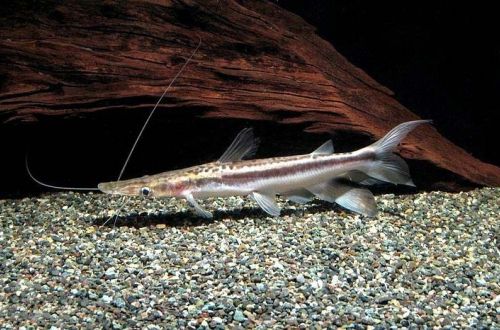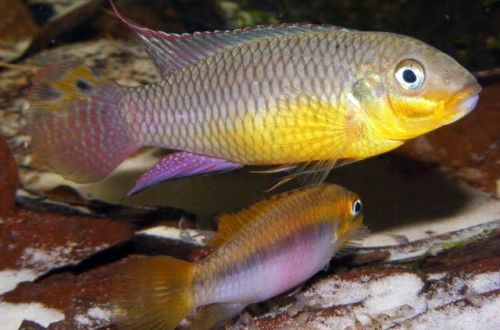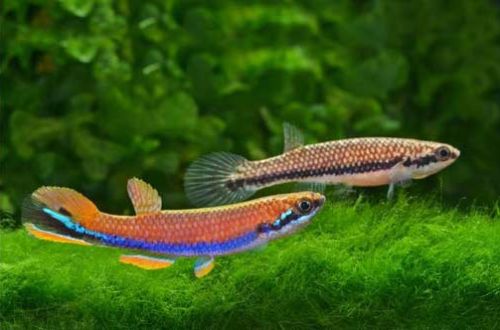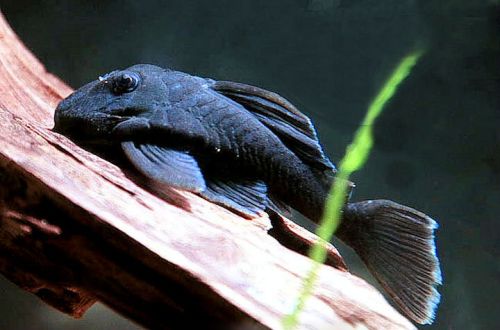
Veslonosoy som
The paddle-nosed catfish, scientific name Sorubim lima, belongs to the family Pimelodidae (Pimelodidae). The catfish is native to South America. It is one of the most common fish on the continent. The natural habitat extends to numerous river systems east of the slope of the Andes mountains, including the vast Amazon and Orinoco basins. It occurs both in relatively stormy waters, and in rivers with a calm current, floodplain lakes, backwaters. It lives in the bottom layer among thickets of plants, flooded snags.

Description
Adult individuals reach a length of up to 40–50 cm, depending on the conditions of detention. The maximum officially recorded length of a catfish caught in the wild was 54 cm.
A characteristic feature of the species is the flat shape of the head, thanks to which the fish got its name – “paddle-nosed”. The body is strong, elongated with short fins and a large forked tail.
The predominant coloration is gray with a broad black stripe running from head to tail. The lower part of the body is lighter. The back is dark, in some cases rounded spots may be present in the pattern. The presence of spots is determined by a specific geographical variety.
Behavior and Compatibility
Predatory, but not aggressive. It is dangerous only for small fish that can fit in his mouth. As neighbors in the aquarium, it is worth considering peaceful fish of comparable size, for example, from among the large South American cichlids, haracin, non-territorial Pleco catfish and Pimelodus. They get along with relatives and can be in groups.
Brief information:
- The volume of the aquarium – from 800 liters.
- Temperature – 23-30°C
- Value pH — 6.5–7.8
- Water hardness – up to 20 dGH
- Substrate type – sandy
- Lighting – subdued
- Brackish water – no
- Water movement – moderate
- The size of the fish is about 50 cm.
- Nutrition – live food
- Temperament – conditionally peaceful
Maintenance and care, arrangement of the aquarium
The optimal size of the aquarium for one Paddlefish starts from 800 liters, for a group of 3 individuals the volume should start from 1200 liters. In the design, it is necessary to provide shelters from large snags (branches, roots, small tree trunks).
When choosing plants, preference should be given to species with a strong root system, or capable of growing on the surface of snags. Soft tender plants are likely to be uprooted.
A prerequisite for long-term maintenance is clean, oxygen-rich water and a low level of organic waste pollution. To maintain high water quality, it will be necessary to change it weekly by 35–50% of the volume and equip the aquarium with a productive filtration system.
Food
In nature, it feeds on small fish, crustaceans, and invertebrates. An appropriate diet must also be provided in the home aquarium.
Before buying, it is worth clarifying the features of feeding. In some cases, breeders manage to accustom catfish to alternative foods with a high protein content, including dry sinking food.





